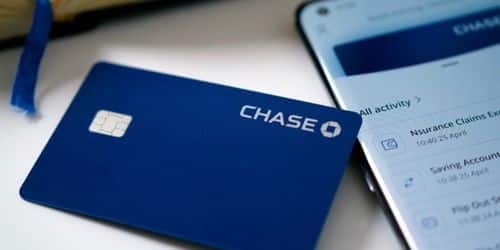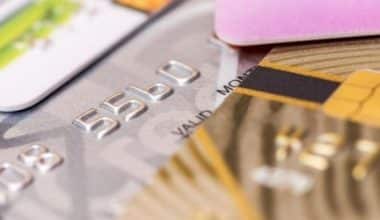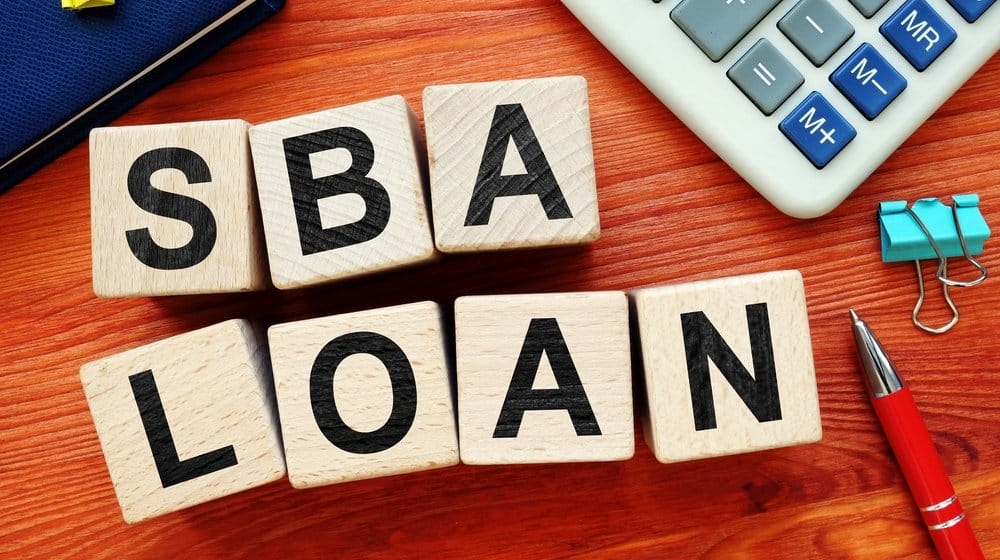With moderate interest rates, Chase Bank provides two savings accounts. Although there are a few ways to get around monthly fees and maintain your earnings, those yields could become considerably lower. The fact that Chase has a sizable national footprint with an extensive network of branches and ATMs, as well as a user-friendly mobile app, maybe more significant to its clients. Get to know more about the JPMorgan Chase Savings Account Interest Rates certificate of deposits and the Current Chase Savings Account Interest Rates by reading this article. Let’s start the journey!
Chase Savings Account Interest Rates
Chase offers the Chase Savings and Chase Premier Savings accounts as its two main savings accounts. Both have an APY of at least 0.01%. Nevertheless, if you link a Premier Plus Checking or Sapphire Checking account and perform at least five transactions each month, you can earn an extra 0.1 percentage point on the Chase Premier Savings account. When these two requirements are satisfied, your interest rate increases to 0.02%, and you get the best chase savings account interest rates with this.
The juice scarcely seems worth the squeezing if all you care about is earning the most return on your savings. Chase’s offerings are the greatest for people who are searching for something different, such as Chase checking account holders looking for a simple place to keep a little amount of cash because many other financial institutions provide better rates on savings. Your primary emergency money, however, must be stored somewhere else even in this situation.
Overview of Chase Savings Account Interest Rates
Both of Chase’s savings account options have no minimum deposit requirements. There is a monthly charge for both accounts.
Chase Savings has a $5 monthly fee that you can avoid by:
- keeping a minimum balance of $300
- linking a Chase checking account that is suitable
- establishing a monthly automatic savings deposit from a Chase bank account of $25 or more
If you keep a minimum balance of $15,000 or connect to a Chase Premier Plus Checking or Chase Sapphire Checking account, you can avoid the $25 monthly service fee on Chase Premier Savings.
You can obtain what Chase refers to as “relationship rates” by opening a Premier Savings account. While applying for such higher interest rates, you must:
- Your account should be connected to Chase Sapphire Checking or Chase Premier Plus Checking.
- Use your linked checking account to complete at least five transactions each month.
0.02% compared. 0.01% is still a pitiful rate of interest, which is double what Chase checking offers typically.
Based on the daily collected sum, interest is compounded and credited monthly to Chase Savings and Chase Premier Savings accounts. By utilizing an automatic savings function that will deduct recurrent deposits from the majority of Chase checking accounts, you can increase your balance.
Owners of accounts should avoid Chase’s $5 savings withdrawal limit cost in addition to the monthly maintenance fees. Every withdrawal that exceeds six within a month’s worth of statements sets it off.
The six-per-month cap applies to all withdrawals and transfers, including those made at ATMs and at cash registers. Chase sets a monthly withdrawal charge cap of three, or $15 overall.
Types of Chase Savings Account Interest Rates
There are two savings accounts available when comparing the interest rates on your Chase savings accounts. You have the choice of a Chase Savings or a Chase Premier Savings account as a saver. Both have interest rates that are reasonably modest. However, each account has a separate minimum balance requirement and monthly charge.
#1. Chase Savings
An annual percentage yield (APY) of 0.01% is provided by the typical Chase Savings account. There is a $5 monthly service charge for this account, but it can be removed if you keep a minimum daily balance of $300, make $25 in repeated automatic transfers, have a linked Chase College Checking account, are under 18, have a linked Premier Plus Checking account, or have a linked Private Client Checking account.
#2. Chase Premier Savings
If you meet the requirements for a Chase Premium Relationship rate, the Chase Premier Savings account offers a slightly higher annual percentage yield (APY) of 0.02% on all balances. You must conduct at least five transactions from your linked checking account each month in order to qualify for the Premium Relationship pricing. You must link a Premier Plus Checking or Chase Sapphire Checking account.
Keeping a minimum daily balance of $15,000 or having a connected Premier Plus Checking or Private Client Checking account will waive the $25 monthly service fee associated with this account.
How Much Can You Earn?
A meager APY is available on both Chase savings accounts. With no further deposits or withdrawals during a 10-year period, an account with a $5,000 opening balance would only earn $5 with the regular account and just $10.01 with the higher rate of the Premier account. Consumers are understandably upset by such a low rate of return in light of the Federal Reserve’s recent action. The country’s central bank increased its short-term borrowing rate in March 2023 to a range of 4.50% to 4.75% in an effort to combat inflation. The federal funds rate was significantly lower at the start of the year—by more than four percentage points.
While banks frequently increase the yield on their savings accounts as the Fed hikes rates, Chase has not done so in this instance.
How Does Chase Bank Compare to Other Banks
Compared to other banks nationwide, Chase Bank’s savings rates are extremely low. The FDIC reports that the national average deposit rate for savings accounts is 0.33%. Locating superior alternatives, though, doesn’t require extensive research. For instance, Ally’s online savings account provides users with a 3.40% APY.
Although not providing a competitive interest rate, Chase does make it simple for customers to open these accounts because there is no required minimum deposit.
Other Chase Savings Options
Chase offers certificates of deposit in addition to savings accounts (CDs). There are now 17 CD options available from Chase, with periods ranging from one month to 120 months. The mediocre Chase savings account rates are barely greater than the Chase CD rates. To receive the best rates on a Chase CD, a higher sum of money would need to be deposited. An APY of 0.02% would be earned, for instance, if you opened a 15-month CD with a $1,000 minimum deposit. An APY of 0.05% would be available with a deposit of at least $10,000.
You could easily get higher CD rates through an online bank, just like you could with the interest rates on Chase savings accounts. Chase does provide several CD promotions, however, these come with higher prices. They presently have 12-month CDs with 3.00% APY for deposits of at least $1,000 and 3.25% APY for deposits of at least $10,000.
JPMorgan Chase Savings Account Interest Rates Certificate of Deposits
Chase offers many different certificates of deposit in addition to regular savings accounts. There are a few exceptions, while most of the bank’s CD rates fall into the same category as its savings rates and aren’t particularly noteworthy. Chase presently offers 2% to 4% APYs on three-month CDs as of February 2023 (the precise APY varies depending on your deposit amount, which can vary from $1,000 to over $100,000), 3% to 3.75% on 12-month CDs, and 2% on 24-month CDs — a good rate, even though several online banks offer better CD rates.
There are certain limitations though. First of all, only customers who have a linked Chase checking account are eligible for CD relationship rates. Instead, all CD terms will pay you a pitiful 0.01% APR. Second, only certain words qualify for these premium rates. You might receive a 2% annual percentage yield (APY) on a three-month CD and 3% on a 12-month CD, but you’ll only get 0.02% APY on a six-month CD. Finally, a $1,000 minimum deposit is required for all Chase CDs, and a $100,000 deposit is necessary to receive the highest APYs for each term.
If you are eligible for the relationship rates and wish to retain your funds with Chase, a CD will provide a higher return than this bank’s savings accounts. For instance, you can earn $325 in interest over a year if you deposit $10,000 in a 12-month CD from Chase and have a connected Chase checking account. You will also be eligible for an APY of 3.25%. You would only receive $2 if you put the same amount into a Chase Premier Savings account.
More About JPMorgan Chase Savings Account Interest Rates Certificate of Deposits
With CDs, you must lock up your money for a predetermined period of time, and you frequently incur penalties for early withdrawal. Depending on the CD term, Chase charges a penalty that can be anywhere between 90 and 365 days’ worth of interest on the amount withdrawn (up to the total interest received on the current term). As a result, CDs aren’t a wise choice for an emergency fund that you want to be able to access right away in an emergency.
Current Chase Savings Account Interest Rates
As of February 10, 2023, the Chase SavingsSM account rate is 0.01%. Interest rates can change and are erratic. The rates for the bank’s premium relationship savings accounts are a little bit higher, but they still aren’t competitive with the rates offered by online savings accounts, which are often close to 4% or more.
How To Decide on the Best Savings Account
Keeping money in a savings account for later use is its most fundamental function. The optimal savings account for your needs, however, depends on your goals for the money. A high annual percentage yield (APY) savings account can be your top choice if you’re a saver who wants to put your money to work. This is particularly true if you prefer to maintain a sizeable sum of cash on hand in case of emergencies. Chase may be the best option if you don’t mind receiving a lower APY in exchange for the amenities that come with a large bank.
Examine the finest savings account interest rates to understand what is feasible before you go with any specific bank account.
How to Open a Chase Savings Account
These are the steps to take when you want to open a chase savings account;
#1. Compile Your Personal Papers
Ensure you have access to both your state-issued identification and Social Security number. In order to open an account, Chase must be able to confirm your identification.
#2. Choose the Account Type You Want
Choose whether you wish to have this account as your own property or a joint account with a spouse or partner. You’ll also need their information if there will be another user on the account.
#3. Fill Out the Application
You can do this task online, visit a nearby branch, or arrange a meeting online for a face-to-face appointment.
#4. Invest Your Money
You can fund your new Chase account by transferring money from another bank account you already have. If you start your account in a branch, you might be able to pay for it using a check or cash. You can either change your direct deposit information with your employer or establish recurring transfers from another bank account if you wish to make consistent deposits to your savings account.
#5. Begin Saving
Start putting money in your savings account, whether it’s for an emergency fund or a specific objective.
What Are the Current Interest Rates on Savings?
In spite of the astonishingly low-interest rates on savings accounts in recent years, they started to rise in 2022 as the Federal Reserve started hiking the federal funds rate to fight inflation. A higher federal funds rate translates into higher interest rates on consumer loans like credit cards and personal loans since it influences the amount banks charge one another for borrowing money. On the other hand, this is good news for savers because rates have increased for products like savings accounts and CDs, especially at online banks.
What Is the Typical Interest Rate on Savings Accounts?
As of January 2023, the Federal Deposit Insurance Corporation reports that the average interest rate on savings accounts is 0.33%. That is a significant increase over the average rate of 0.06% in January 2022, but it is still a pitiful return. Even the highest savings account interest offered by Chase, 0.02%, is far lower than the national average. On the other hand, there are likely to be online banks and credit unions that offer rates that are more than 10 times the national average. Check out the earnings potential of our top-rated high-yield savings accounts. What is the typical interest rate on savings accounts?
The Federal Deposit Insurance Corporation reports that as of January 2023, the average interest rate on savings accounts is 0.33%. That is a significant increase over the average rate of 0.06% in January 2022, but it is still a pitiful return. Even Chase’s highest savings account rate of 0.02% is far lower than the average for the country.
Certain internet banks and credit unions may, however, provide rates that are more than ten times more than the average rate. Check out the earnings potential of our top-rated high-yield savings accounts.
Which Banks Have the Highest Interest Rates on Savings?
There are some banks and credit unions that exist solely online, and their savings rates tend to be higher. Compared to large banks, these financial firms often have reduced overhead costs, allowing them to offer greater rates. Online banks reward their clients by increasing the APYs on their savings accounts. Nonetheless, several of the major banks in the nation have also started raising their rates.
It may be possible to obtain greater returns by checking out a lesser-known bank. Please keep in mind to check whether a bank is FDIC-insured before depositing your money there because this means the government will protect your funds in the event that the bank fails.
Which Bank Gives 7% Interest on Savings Account?
Banks in the US do not provide interest rates of 7%, but Landmark Credit Union does, with significant conditions and restrictions.
Is Chase Savings Interest Paid Monthly?
Monthly interest is calculated by multiplying the collected balance by the daily interest rate and adding it all together. Interest rates are determinable at Chase’s discretion and change daily. Prices are valid only through 03/17/2023 and are subject to change at any time.
Is Chase Good for a Savings Account?
If you like Chase’s extensive network of American ATMs and branches, the Chase Savings account is something you should think about because it offers ease. The market, however, offers a wide variety of various savings accounts.
Final Thoughts
Chase is a well-known company that provides a variety of savings account choices and is one of the biggest banks in the nation. Yet, the APYs associated with these Chase savings accounts are not very high. Given the bank’s extensive physical presence, Chase’s savings account may make sense if you are okay with a somewhat modest APY. Yet, you will probably find considerably greater APY alternatives if you are at ease using an internet bank.
Related Articles
- What Are SHORT-TERM INVESTMENTS: Definition, Examples, and Banks
- WHAT IS APY IN BANKING AND HOW IS IT CALCULATED?
- APY: Meaning, How It Works, and Calculated
- THE TOP BEST BANK BONUSES: Practices & Tips in 2023
- SAFE INVESTMENTS WITH HIGH RETURNS: Best and Profitable Ideas 2023.






